In Venice, minimalist Singapore show speaks volumes
Amid the cacophony of countries hawking artists at the Venice Biennale, Singapore takes a different tack by speaking softly

WITH over 80 countries vying for the attention of 600,000 international visitors in Venice, the Singapore Pavilion is surprisingly quiet. It’s conceived as an isle of calm in a sea of brightness and bluster, a respite from the madding crowd.
You step into a life-size maze made out of paper, only to realise you’ve entered the architecture of a book. As you follow the path going deeper into the maze, you encounter a film that tells the story of books – how they’re published, how they’re banned, and how they’re sometimes preserved against all political, social and economic odds.

Further into the maze, there is a small structure made out of books. You’re invited to take a free copy of Pulp III: An Intimate Inventory Of The Banished Book (2022), and sit on one of the benches to browse the 400-page tome, which recounts the history of Singapore and Venice as once-formidable printing hubs, and other stories about publishing.
If you choose to, you can also leave the Singapore Pavilion immediately with the book in hand, a memento of the quiet encounter you’ve just had. The experience may have felt brief and desultory while you were there. But it will grow in your consciousness when you peruse the book later, and discover the real-life characters in its pages who have risked life and limb to preserve these tiny treasuries of knowledge known as books.
Amid the usual Venice Art Biennale opening week cacophony of different countries hawking their best artists, the Singapore team has taken a different tack by mounting a minimalist show that speaks softly but persistently.
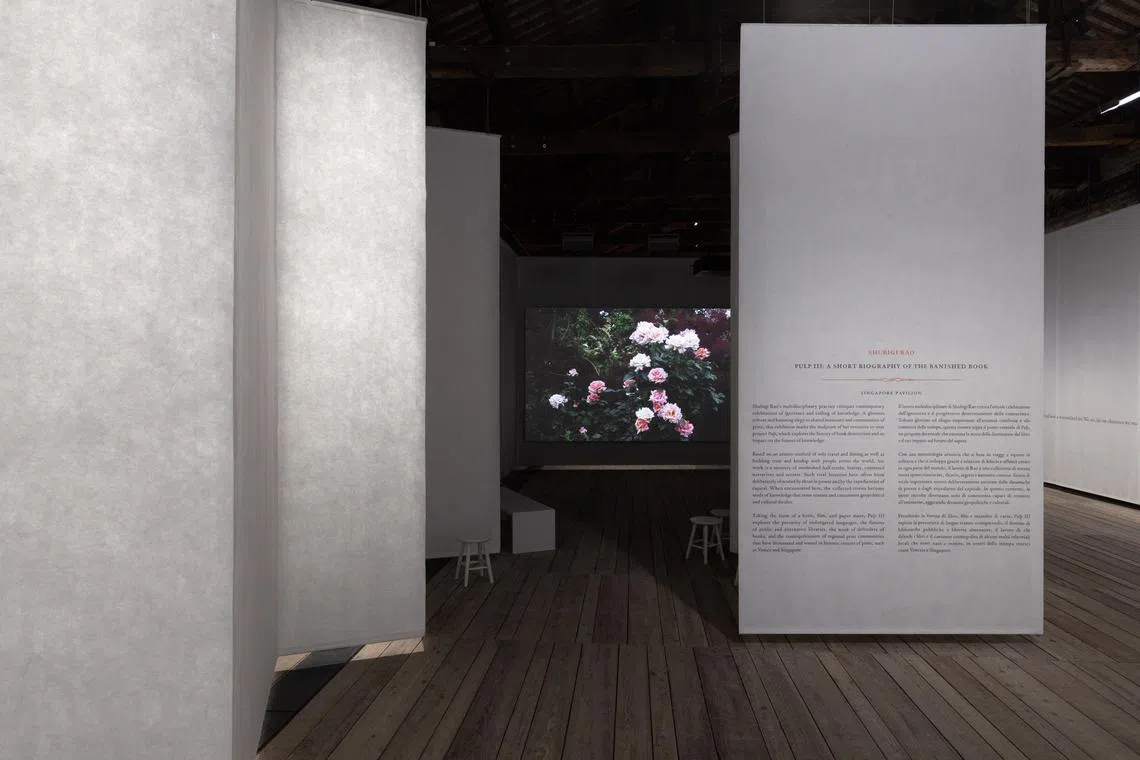
POWER OF BOOKS
The artist-writer-filmmaker representing Singapore at the Venice Art Biennale 2022 is Shubigi Rao, a lifelong bibliophile who’s conceived many ways of expressing her love of the printed word. Her Pulp III: An Intimate Inventory Of The Banished Book is the third of five books that signpost an ambitious long-term project exploring the book collections, libraries and archives of the world.
Pulp I, published in 2016, gives a sprawling overview of the project as it relates to culture, people, war, memory and language. Rao writes: “To pulp books is to reduce the dangerous contagion of ideas, ethos, sensibilities and knowledge to a bland, inedible, sterile mush. Pulping is the negation of everything that is a book.” At the same time, she concedes: “All books are predestined ashes.”
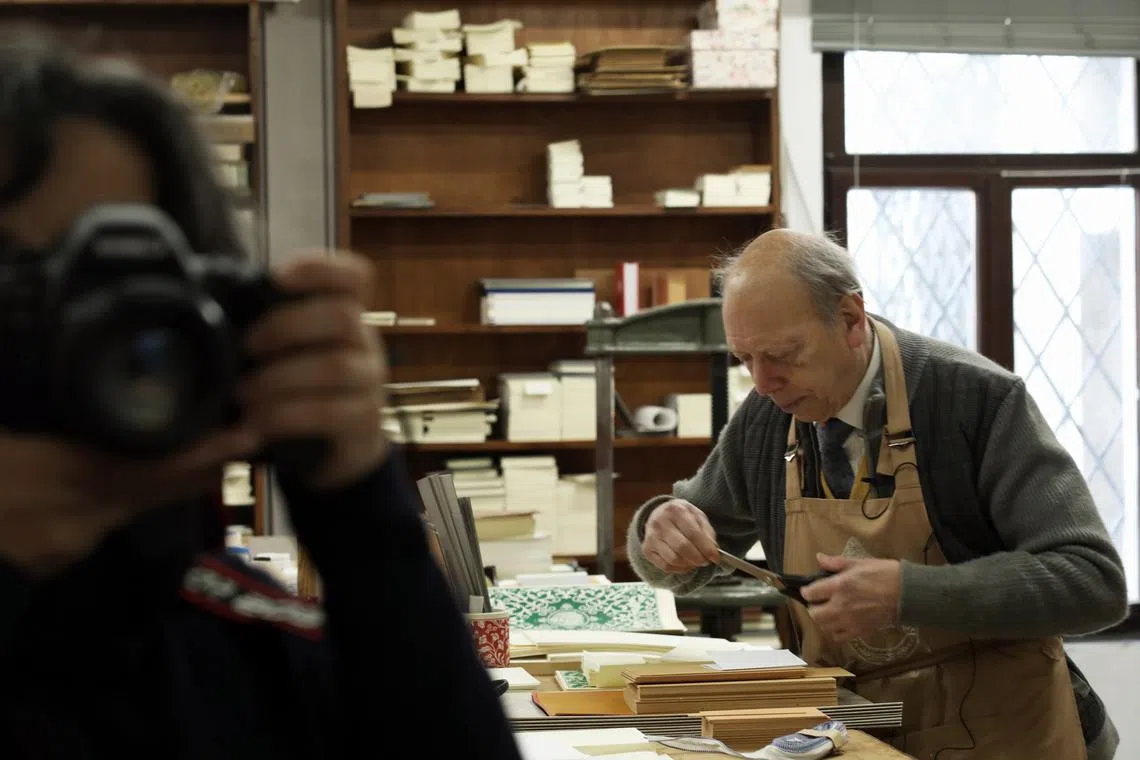
Pulp II, published in 2018, showcases various individuals who have attempted, in ways big or small, to save the printed word from zealots, tyrants and capitalists. They include Tomislav Medak, an initiator of the Public Library, a digital shadow archive that mindfully pirates books in the belief that knowledge should be free; Drazan Lapic, a publisher and digitiser of extremely rare books; as well as ordinary individuals who formed a human chain to rescue books from the Sarajevo City Hall that burnt for two days and three nights in 1992, books that contained the entire history of Bosnia and Herzegovina, books that Serb nationalists wanted to expunge.
Both Pulp I and Pulp II earned local and international accolades, including the Singapore Literature Prize for Creative Non-Fiction. In 2019, Rao was named curator of the Kochi-Muziris Biennale. In 2020, she earned a spot in the ArtReview’s Power 100 List, where the only other Singaporean listed was museum director Eugene Tan.
A NEW CHAPTER
Pulp III has now made its debut at the Venice Biennale, with the ambitious intent of having thousands of visitors pick up a free copy of the book, read it, and be reminded once more of the importance of the book as a symbol of knowledge, power and activism.
Working with esteemed curator Ute Meta Bauer, Rao says: “People can have a copy of the book on the one condition that they state their name, e-mail address, and their destination city or where they're taking the book to. I want to map where the book goes to, which will then become material for Pulp IV and Pulp V."
All the Pulp books have been designed by Benson Chong and Felix Sng of SWELL and published by Rock Paper Fire.
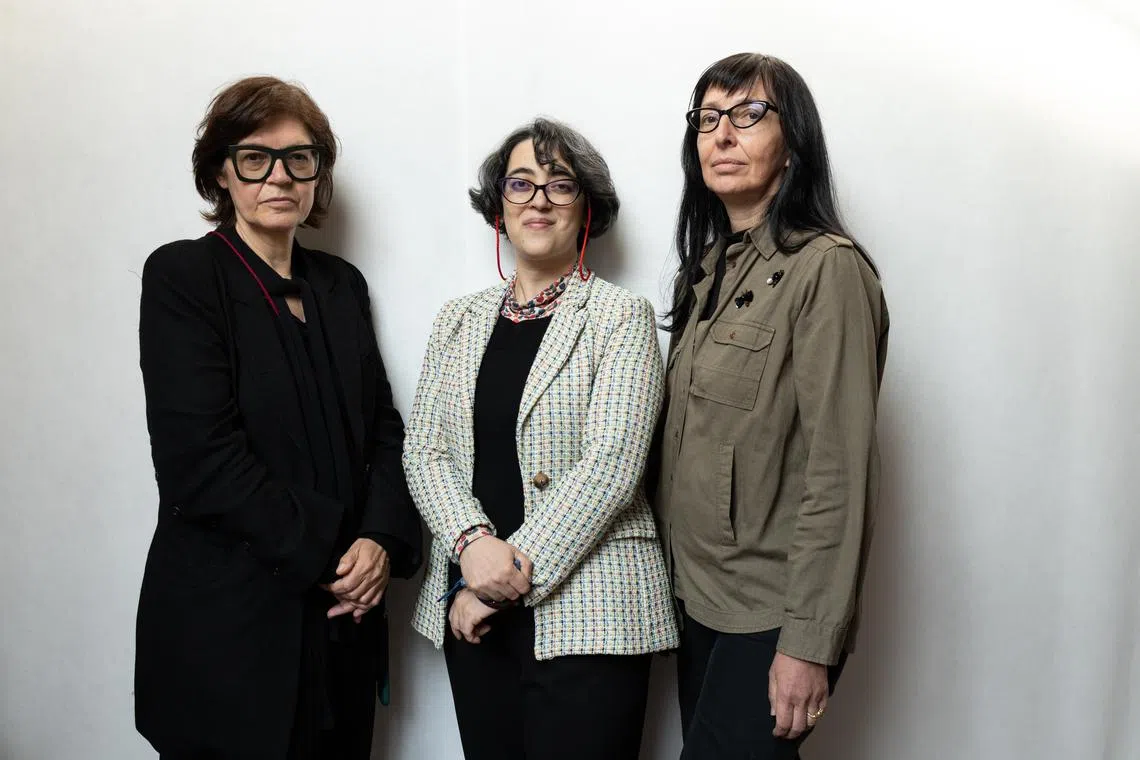
Edwin Tong, Minister for Culture, Community And Youth and Second Minister for Law, flew to Venice to inaugurate the opening of the show on Apr 21. He said: "Singapore's milestone 10th year participation at the Art Biennale, and the first Singapore Pavilion presentation by an all-female artist and curator team, is all the more inspiring as it demonstrates to the world the diversity and range of talents in our visual landscape."
A crucial section of Pulp III the book deals with vanishing languages of the world, such as kristang, which was once commonly spoken by Singapore and Malacca’s Eurasian communities. Rao says: “I don't know how many people realise this, but we lose a language every 14 days. That's a major form of extinction that's almost impossible to roll back."
The accompanying film at the exhibition features Singapore writer Melissa De Silva reading aloud from a book of idioms in kristang. There are also conversations with Singapore researcher Faris Joraimi on the cultural politics and intellectual history of the Malay world, as well as an interview with the Italian professor of book history Mario Infelise on the historical connections between access to knowledge and political power.
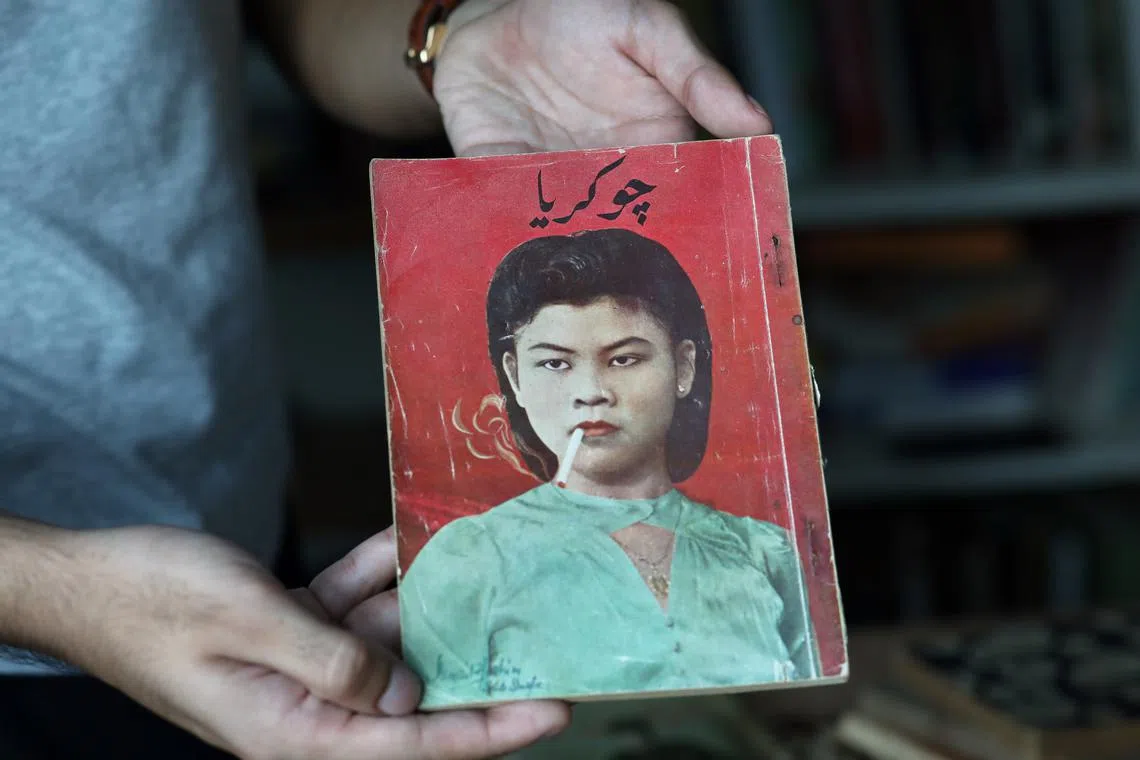
Bauer, who has a long involvement with various Venice Biennale pavilions, says: "We must also not forget that there is a war going on in Europe. And in partial response to that, we felt the Singapore Pavilion could be a place of solace, a place to remember our shared humanity, our shared love of books, languages and cultures, and reaffirm our efforts to preserve them."
PAPER MAZE
Well-known architectural designer Laura Miotto, previously responsible for some of the fine exhibition designs at NTU Centre of Contemporary Art, conceived the life-size maze made out of paper.
Miotto says: “Central to our discussions was the act of reading – which is a very intimate experience whether you’re doing it alone or in a public library. We wanted to recreate this intimacy through a life-size maze that leads you into a private space where you can pause and reflect.
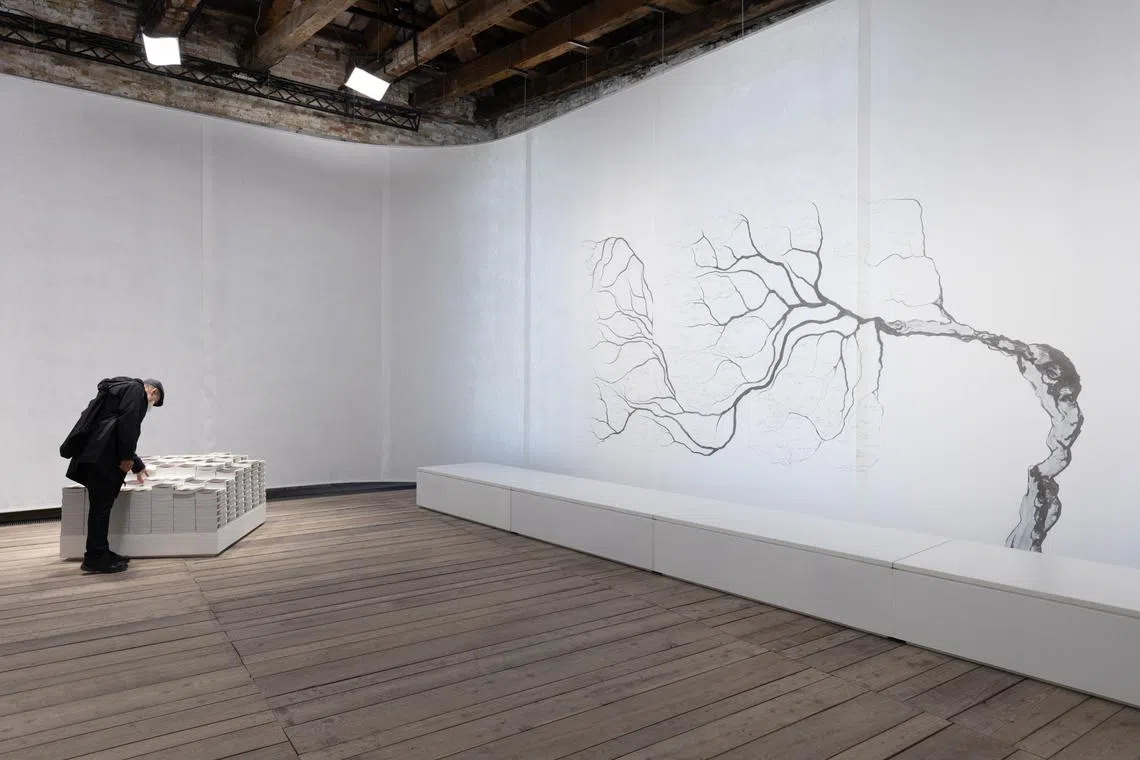
"The maze is made out of paper to reflect the materiality of books. And because of the lightness of paper, we were able to suspend the entire architecture from the large wooden trusses that hold up the roof. The lightness of paper also gives a sense of something delicate, precious and ephemeral.
"Biennale are hyper-stimulating environments. We chose to counter that with a light touch."
Curator Bauer jokes: "When we first submitted our plans to the Biennale, its architects were immediately concerned that we had so many books and paper. They said: ‘You can’t have so many books here – they’re a fire hazard!’ But when we told them the books are the artwork, they went: ‘Oh, in that case, you’re fine. We don’t mess with the art.'"
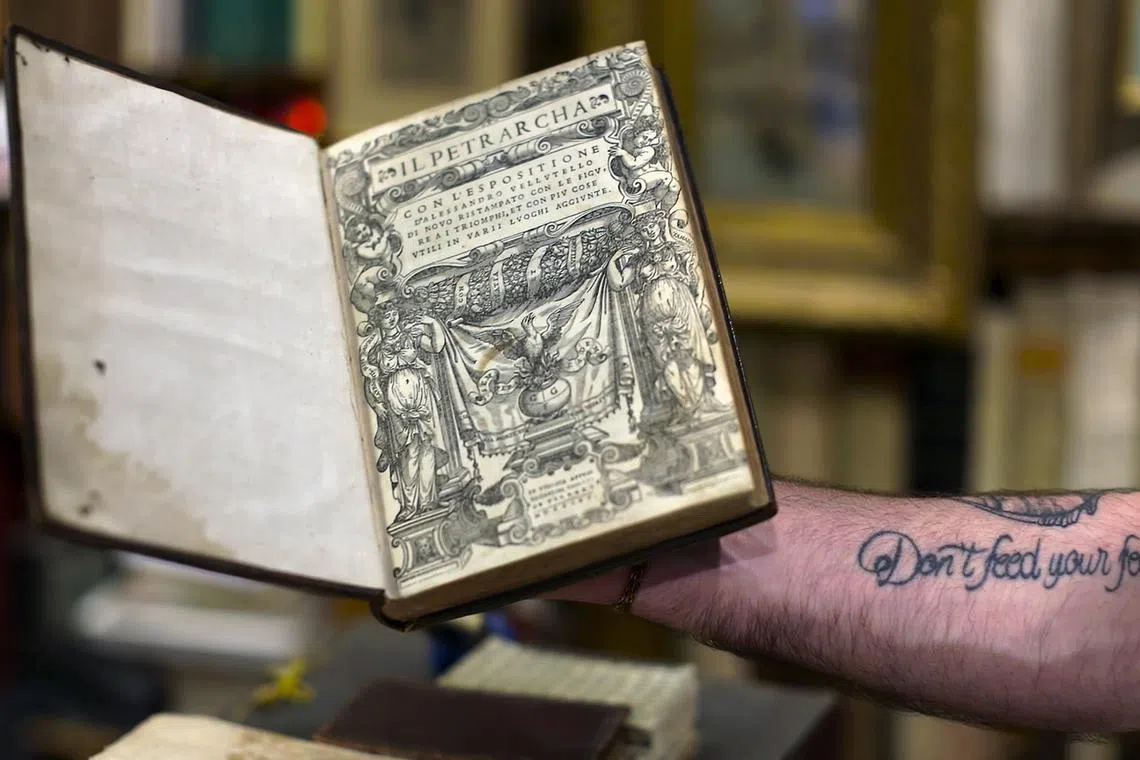
“For us, the books we’re giving out are really important. There are 80 pavilions here and attention spans are limited. If people can take something away with them and engage with it later, that can go a long way. People forget that Singapore was once a printing hub of a region. So this book is a gift and a reminder.”
Rao was born in Mumbai in 1975 but moved to Singapore two decades ago and became a citizen. Bauer is a German-born Singapore permanent resident who's become an important figure in the local art scene since arriving here in 2013. The fact that the National Arts Council selected them to represent Singapore at the biennale sends the message that the country acknowledges the valuable contributions of its naturalised citizens and permanent residents.
Rao says: “Singapore is my adopted home – but it has adopted me as well. For someone who isn’t born in Singapore, it is an incredible privilege for me to be part of the first women-led team to represent the country. It is a privilege I do not take for granted.”
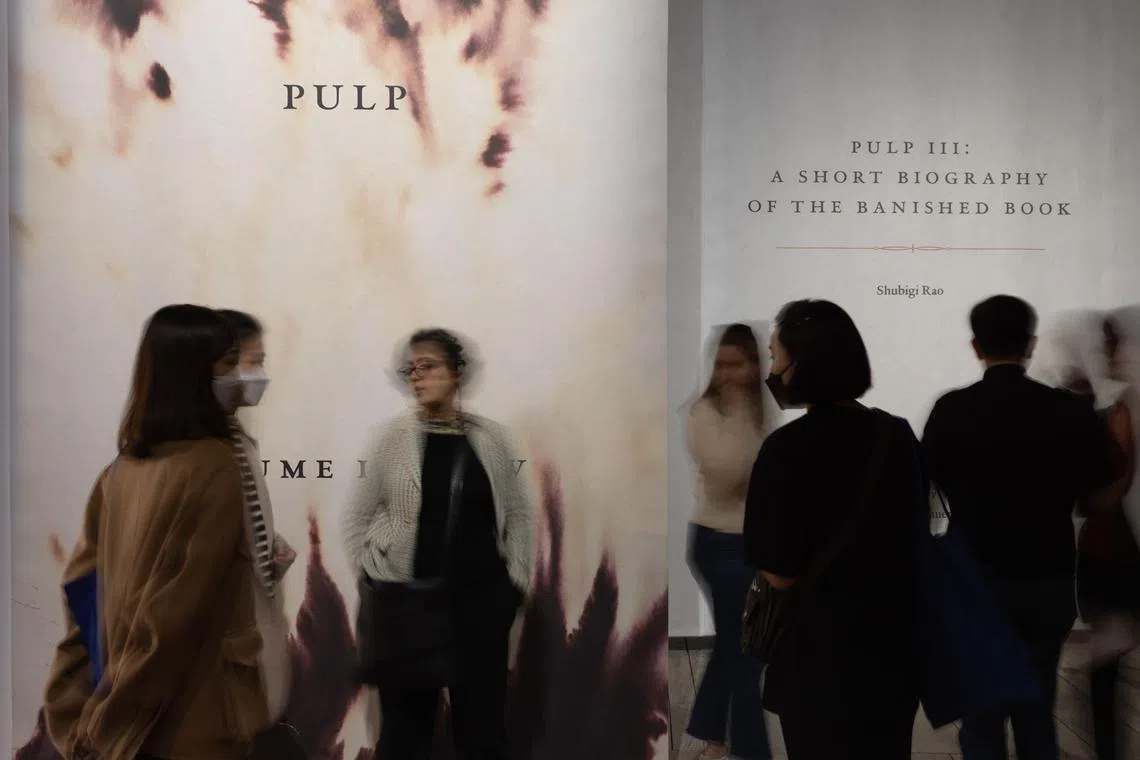
The Singapore Pavilion is located in a complex of buildings called the Sale d’Armi, which is located within the Arsenale, one of two main sites of the Venice Biennale. The Biennale runs from now till 27 Nov 2022.
Copyright SPH Media. All rights reserved.
